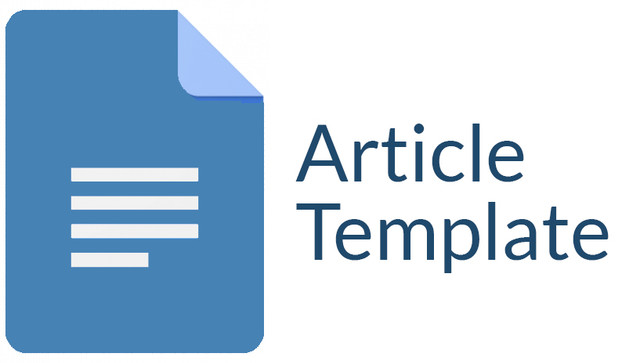Development of E-Book Learning Media Based on Problem Solving in the Material of the Human Digestive System
DOI:
https://doi.org/10.30736/seaj.v3i2.433Keywords:
RasulullahAbstract
Abstract : This research aims to develop e-book learning media using the professional Flip pdf application based on problem solving in human digestive system materials and to test the feasibility of e-book media developed through validation of Experts and to find out the effectiveness of teacher and student responses. Is a type of research development / Research and development that uses 4D models with stages (define, design, develop and desiminate) in this study only up to the stage of develope.descriptive qualitative research design. E-book as a free variable and human digestive system as a bound variable. The population in the study was 18 students of class XI AL-khairiyah High School 4 Cilegon, school year 2021/2022. Data retrieval and collection techniques are carried out by spreading questionnaires and interviews, data analysis techniques using interpretase scales and likert scales to test the feasibility of e-books that have been created. The results of the assessment of media experts, obtained a score of 82% and and expert test material obtained a value of 79% which falls into the category of feasible while the response test of the student response test obtained a score of 88% and the teacher board 81% with a very interesting category, based on the results of the study can be concluded that: e-book human suppression system based on problem solving is suitable for student use in biological learning system materials.
Keywords:
biological learning, e-book, human digestive system, problem solving
Downloads
References
Astuti, S. (2015). PENGEMBANGAN PERANGKAT PEMBELAJARAN BERBASIS PROBLEM SOLVING MODEL POLYA DALAM PENINGKATAN KETERAMPILAN BERPIKIR KRITIS POKOK BAHASAN BARISAN BILANGAN SISWA KELAS IX SMP NEGERI 3 KOTA PROBOLINGGO. Pancaran Pendidikan, 4, 12. https://core.ac.uk/download/pdf/298991009.pdf
Asyhari, A., & Silvia, H. (2016). Pengembangan Media Pembelajaran Berupa Buletin dalam Bentuk Buku Saku untuk Pembelajran IPA Terpadu. Jurnal Ilmiah Pendidikan Fisika Al-Biruni, 5(1), 1–13. https://doi.org/10.24042/jpifalbiruni.v5i1.100
Eka Wulandari. (2008). PENGEMBANGAN MEDIA PEMBELAJARAN INTERAKTIF BERBASIS E-BOOK PADA MATERI SISTEM PENCERNAAN UNTUK SMP KELAS VIII [UNIVERSITAS ISLAM NEGERI (UIN) RADEN INTAN LAMPUNG]. http://repository.radenintan.ac.id/5161/
Septaria, K., & Dewanti, B. A. (2021). Implementation of project based learning on student reasoning on COVID-19 disaster mitigation. Prisma Sains: Jurnal Pengkajian Ilmu dan Pembelajaran Matematika dan IPA IKIP Mataram, 9(1), 20-27.
Ghofur, A., & Kustijono, R. (2015). PENGEMBANGAN e-BOOK BERBASIS FLASH KVisoft FlipBook PADA MATERI KINEMATIKA GERAK LURUS SEBAGAI SARANA BELAJAR SISWA SMA KELAS X. Jurnal Inovasi Pendidikan Fisika (JIPF, 04(02).
Haritsah Ulya, Ratu Betta Rudibyani, T. E. (2019). Pengembangan Modul Kimia Berbasis Problem Solving Pada Materi Asam Basa Arrhenius. Jurnal Pendidikan Dan Pembelajaran Kimia, 7(1).
hiagarajan, Sivasailam, Dorothy, S. Semmel, & Melvyn, L. (1974). Instructional Development for Training Teachers of Exceptional Children. Indiana.
Khairinal, K., Suratno, S., & Aftiani, R. Y. (2021). Pengembangan Media Pembelajaran E-Book Berbasis Flip Pdf Professional Untuk Meningkatkan Kemandirian Belajar Dan Minat Belajar Siswa Pada Mata Pelajaran Ekonomi Siswa Kelas X Iis 1 Sma Negeri 2 Kota Sungai Penuh. Jurnal Manajemen Pendidikan Dan Ilmu Sosial, 2(1), 458–470.
Sulistyaningrum, D. A. (2017). Pengembangan Quantum Teaching Berbasis Video Pembelajaran Camtasia Pada Materi Permukaan Bumi Dan Cuaca. Profesi Pendidikan Dasar, 4(2).
Wulandari, V., Abidin, Z., & Praherdhiono, H. (2019). Pengembangan Media Pembelajaran E-Book Infografis Sebagai Penguatan Kognitif Siswa X MIA. Jurnal Kajian Teknologi Pendidikan, 2(1).
Downloads
Additional Files
Published
How to Cite
Issue
Section
License
Authors who publish with this journal agree to the following terms:
- Authors retain copyright and grant the journal right of first publication with the work simultaneously licensed under a Creative Commons Attribution-ShareAlike 4.0 International License that allows others to share the work with an acknowledgment of the work's authorship and initial publication in this journal.
- Authors are able to enter into separate, additional contractual arrangements for the non-exclusive distribution of the journal's published version of the work (e.g., post it to an institutional repository or publish it in a book), with an acknowledgment of its initial publication in this journal.
- Authors are permitted and encouraged to post their work online (e.g., in institutional repositories or on their website) prior to and during the submission process, as it can lead to productive exchanges, as well as earlier and greater citation of published work (See The Effect of Open Access).

This work is licensed under a Creative Commons Attribution-ShareAlike 4.0 International License.










